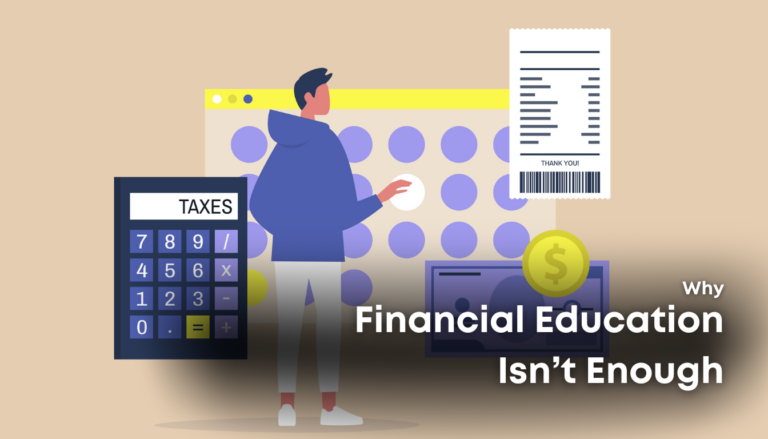You’ve probably seen headlines that say things like “74% of Gen Z wants access to more financial education,” or “Gen Z isn’t financially literate (yet).” The gist of all these articles is the same:
Young people say that financial literacy will alleviate some of their money problems.
But let’s not pretend that financial education is going to somehow fix everything. Read on to learn how credit unions can make a more meaningful difference…
How Much Can Financial Education Really Help?
It may certainly be true that younger generations aren’t entirely financially literate. And it may be true that a lack of financial education is hindering people’s long-term financial health and wellbeing.
But relatively few people are poor because they lack a solid understanding of budgeting.
Simply put, most people are poor because they don’t make very much money.
On top of that, the cost of housing, food, gas, car ownership, healthcare, education, and everything else has risen. In fact, the cost of all the above rose more than the minimum wage for decades.
Nobody can educate themselves out of a rising cost of living coupled with stagnating wages.
Offering financial education is good. But it’s not enough. People need an actual, tangible leg up. With dollar signs attached.
Helping Members and Communities
We could have talked about Starlight in our roundup of deposit generating fintechs. But Starlight isn’t exactly designed to drive deposits—though it’s certainly a potential side effect.
But what Starlight actually does is help credit unions proactively identify resources and ways to save for their members. Typically, they find more resources for financially vulnerable members.
Here’s how they do it:
More than $140B in local and government assistance goes to qualified people each year. This assistance comes in many forms:
- Earned Income Tax Credit
- Utilities payment support
- Assistance paying for childcare
- Supplemental Nutrition Assistance Program (SNAP)
There are a lot of these programs if you know where to find them. The issue is that a lot of people don’t know where to find them. Or, if they do find them, it’s not always easy to apply.
Starlight eases the search and application burden for members through its technology solution white-labeled for credit unions. Automatically, Starlight does the following:
1. Check eligibility
They identify local, state, and federal benefits that would make a financial difference for each household. They do this based on the member’s income and everyday expenses.
2. Deliver proactively
They proactively let members know about the benefits at the right time and place, and guide them through the benefit application process. This takes a lot of time and guesswork out of the process.
3. Ongoing support
Starlight continuously monitors credit union member data to uncover new opportunities to provide financial support to members.
Real-World Financial Benefits
All in all, Starlight is able to uncover more than $1,000 per year in each qualifying household. For most people, that’s far more meaningful than learning about CDs, compound interest, and budgeting habits.
The extra money each month helps with bills, groceries, utilities, and other necessities and unavoidable costs of life. It immediately contributes to member financial health and wellness in a way that education can’t.
But it also contributes to the credit union. That’s more interchange income and more opportunities to help members save. Additionally, thanks to being a white-label platform, it allows credit unions a chance to deepen relationships with at-risk members.
You could couple Starlight with financial education to create a killer support system for members. But don’t stop at education—Starlight is the real safety net that members need.
Learn more about Starlight here:




